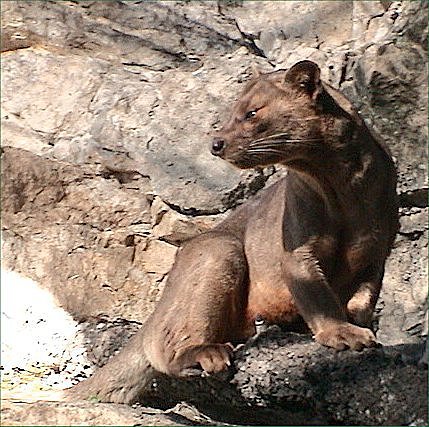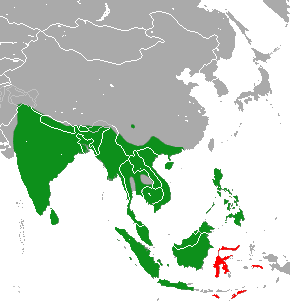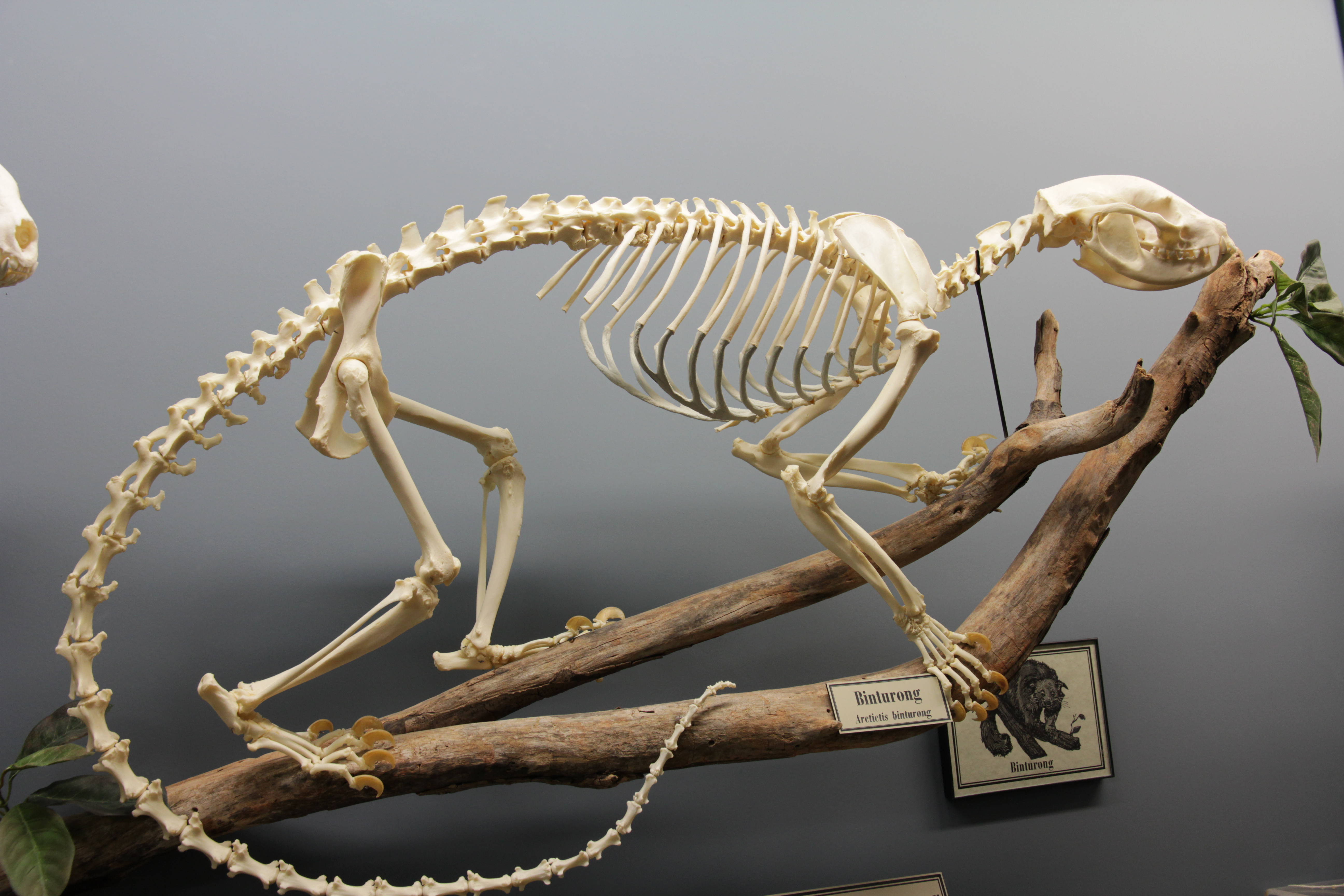|
Stenoplesictidae
Stenoplesictidae is the name of a polyphyletic family of extinct civet-like feliforms. Taxonomy Classification Phylogenetic tree The cladogram shown below represents the current phylogenetic relationships of members of family Stenoplesictidae (green): References * Morlo M. & Nagel D. (2007). "The carnivore guild of the Taatsiin Gol area: Hyaenodontidae (Creodonta), Carnivora, and Didymoconida from the Oligocene of Central Mongolia". ''Annalen des Naturhistorischen Museums Wien'' 108A: 217–231. * Morlo M., Miller E. R. & El-Barkooky A. N. (2007). "Creodonta and Carnivora from Wadi Moghra, Egypt". ''Journal of Vertebrate Paleontology'' 27(1): 145–159. * de Bonis, L., S. Peigne, & M. Hugueney (1999) – "Carnivores feloides de l'Oligocene superieur de Coderet-Bransat (Allier, France)". ''Bulletin de la Société Géologique de France 1999'' 170: 939–949. * Morales, J., Pickford, M., Salesa, M. & Soria, D., 2000. ''The systematic status of Kelba'', Savage, 1965, ''Kenyalu ... [...More Info...] [...Related Items...] OR: [Wikipedia] [Google] [Baidu] |
Africanictis
''Africanictis'' is an extinct genus of carnivorous cat-like mammals belonging to the superfamily SUPERFAMILY is a database and search platform of structural and functional annotation for all proteins and genomes. It classifies amino acid sequences into known structural domains, especially into SCOP superfamilies. Domains are functional, str ... Aeluroidea, endemic to Africa for approximately , from 23.03 to 11.610 Ma, during the Miocene epoch. ''Africanictis'' is thought to have had an omnivorous—or more precisely hypercarnivorous to mesocarnivorous—diet. Taxonomy ''Africanictis'' was named by Morales et al. (1998). It was assigned to Stenoplesictidae by Morlo et al. (2007).M. Morlo, E. R. Miller, and A. N. El-Barkooky. 2007. Creodonta and Carnivora from Wadi Moghra, Egypt. Journal of Vertebrate Paleontology 27(1):145-159 References Miocene feliforms Miocene mammals of Africa Prehistoric carnivoran genera {{paleo-carnivora-stub ... [...More Info...] [...Related Items...] OR: [Wikipedia] [Google] [Baidu] |
Feliformia
Feliformia is a suborder within the order Carnivora consisting of "cat-like" carnivorans, including cats (large and small), hyenas, mongooses, viverrids, and related taxa. Feliformia stands in contrast to the other suborder of Carnivora, Caniformia (also Canoidea, "dog-like" carnivorans). The separation of the Carnivora into the broad groups of feliforms and caniforms is widely accepted, as is the definition of Feliformia and Caniformia as suborders (sometimes superfamilies). The classification of feliforms as part of the Feliformia suborder or under separate groupings continues to evolve. Systematic classifications dealing with only extant taxa include all feliforms into the Feliformia suborder, though variations exist in the definition and grouping of families and genera.Taxonomic references - extant species (1): Supporting descriptive information and picturesDiversity Web (online) – Feliformia/ref>Taxonomic references - extant species (2)Integrated Taxonomic Information Sy ... [...More Info...] [...Related Items...] OR: [Wikipedia] [Google] [Baidu] |
Stenoplesictis
''Stenoplesictis'' is an extinct genus of carnivorous cat-like mammals belonging to the superfamily Aeluroidea, from Europe (Quercy, France) and Asia (Mongolia) (''S. indigenus''), from the Oligocene 33.9—28.4 Ma, existing for about . ''Stenoplesictis'' is shown to have an omnivorous diet or more precisely, hypercarnivorous to mesocarnivorous. Taxonomy ''Stenoplesictis'' was named by Filhol (1880). It was assigned to the Aeluroidea by Hunt (1989) and Hunt (1998); to the Viverridae by Flynn (1998); and reassigned to the Stenoplesictidae Stenoplesictidae is the name of a polyphyletic family of extinct civet-like feliforms. Taxonomy Classification Phylogenetic tree The cladogram shown below represents the current phylogenetic relationships of members of family Stenoplesictid ... by Morlo et al. (2007).J. J. Flynn. 1998. Early Cenozoic Carnivora ("Miacoidea"). In C. M. Janis, K. M. Scott, and L. L. Jacobs (eds.), Evolution of Tertiary Mammals of North America 1:110-1 ... [...More Info...] [...Related Items...] OR: [Wikipedia] [Google] [Baidu] |
Aeluroidea
Aeluroidea is an extant Taxonomic rank, clade of cat, feline-like carnivores that are, or were, endemic to North America, South America, Africa, and Asia. They appeared during the Oligocene about . Taxonomy Aeluroidea was named by William Henry Flower in 1869. It was assigned to Carnivora by Flower (1883) and Carroll (1988); and to Feliformia by Bryant (1991).H. N. Bryant. 1991. Phylogenetic relationships and systematics of the Nimravidae (Carnivora). Journal of Mammalogy 72(1):56-78 References {{Taxonbar, from=Q4687717 Extant Oligocene first appearances ... [...More Info...] [...Related Items...] OR: [Wikipedia] [Google] [Baidu] |
Moghradictis
''Moghradictis'' is an extinct genus of carnivorous cat-like mammals belonging to the superfamily Aeluroidea, endemic to North Africa (Wadi Moghra, Egypt) during the Early Miocene. ''Moghradictis'' is shown to have an omnivorous diet or more precisely, hypercarnivorous to mesocarnivorous.R. M. Nowak. 1999. Walker's Mammals of the World, Sixth Edition I:1-836 It is thought to be a member of the Stenoplesictidae Stenoplesictidae is the name of a polyphyletic family of extinct civet-like feliforms. Taxonomy Classification Phylogenetic tree The cladogram shown below represents the current phylogenetic relationships of members of family Stenoplesictid ... familyM. Morlo, E. R. Miller, and A. N. El-Barkooky. 2007. Creodonta and Carnivora from Wadi Moghra, Egypt. Journal of Vertebrate Paleontology 27(1):145-159 and has only one known species, ''M. nedjema''. References {{paleo-carnivora-stub Miocene carnivorans Miocene mammals of Africa Prehistoric carnivoran genera< ... [...More Info...] [...Related Items...] OR: [Wikipedia] [Google] [Baidu] |
Hemigalinae
The Hemigalinae are a subfamily of the viverrids denominated and first described by John Edward Gray in 1864. Hemigalinae species are native to Southeast Asia from southern China through Indochina, Malay Peninsula to Sumatra, Borneo and Sulawesi. Characteristics The tails of Hemigalinae species are ringed. The toes and the middle of the lower part of the tarsus are bald. The frenum, upper part, and sides of the lower part are hairy. The orbit is imperfect. Hemigalinae resemble the Viverrinae in having the scent glands present in both sexes and wholly perineal, but differing by their simpler structure, consisting in the male of a shallower, smaller pouch, with less tumid lips, situated midway between the scrotum and the penis, but not extending to either. In the female, the scent glands consist of a pair of swellings, each with a slit-like orifice, situated one on each side of the vulva and a little behind it and on a common eminence, the perineal area behind this eminence bein ... [...More Info...] [...Related Items...] OR: [Wikipedia] [Google] [Baidu] |
Paradoxurinae
Paradoxurinae is a subfamily of the feliform viverrids that was denominated and first described by John Edward Gray in 1864. Pocock subordinated the genera Genus ( plural genera ) is a taxonomic rank used in the biological classification of living and fossil organisms as well as viruses. In the hierarchy of biological classification, genus comes above species and below family. In binomial ... '' Paradoxurus'', '' Paguma'' and '' Arctictis'' to this subfamily. Classification Living species Phylogenetic tree The phylogenetic relationships of Paradoxurinae are shown in the following cladogram: Extinct genera *'' Kichechia'' *'' Tugenictis'' *'' Kanuites'' *'' Siamictis'' References Viverrids Taxa named by John Edward Gray {{carnivora-stub ... [...More Info...] [...Related Items...] OR: [Wikipedia] [Google] [Baidu] |
Viverridae
Viverridae is a family of small to medium-sized, feliform mammals. The viverrids () comprise 33 species placed in 14 genera. This family was named and first described by John Edward Gray in 1821. Viverrids occur all over Africa, southern Europe, and South and Southeast Asia, across the Wallace Line. Their occurrence in Sulawesi and in some of the adjoining islands shows them to be ancient inhabitants of the Old World tropics. Characteristics Viverrids have four or five toes on each foot and half-retractile claws. They have six incisors in each jaw and molars with two tubercular grinders behind in the upper jaw, and one in the lower jaw. The tongue is rough with sharp prickles. A pouch or gland occurs beneath the anus, but there is no cecum. Viverrids are the most primitive of all the families of feliform Carnivora and clearly less specialized than the Felidae. In external characteristics, they are distinguished from the Felidae by the longer muzzle and tuft of facial vibr ... [...More Info...] [...Related Items...] OR: [Wikipedia] [Google] [Baidu] |
Viverroidea
Viverroidea is a clade within feliformia, containing both the family Viverridae, and the superfamily Herpestoidea. Classification * Infraorder Viverroidea ** Family Viverridae (civets and allies) ** Superfamily Herpestoidea *** Family Eupleridae (Malagasy carnivorans) *** Family Herpestidae (mongooses and allies) *** Family Hyaenidae (hyenas and aardwolf) *** Family †Lophocyonidae Lophocyonidae is an extinct family of feliform carnivorans from the Miocene of Europe.Pilgrim, G. E. (1931). Catalogue of the pontian Carnivora of Europe. British Museum (Natural History): 1174.O. Fejfar, N. Schmidt-Kittler, and M. Zacharov. 1987 ... *** Family † Percrocutidae Phylogenetic tree The phylogenetic relationships of Viverroidea are shown in the following cladogram: References Mammal infraorders Mammal taxonomy Taxa named by John Edward Gray {{Carnivora-stub ... [...More Info...] [...Related Items...] OR: [Wikipedia] [Google] [Baidu] |
The Carnivores Of West Africa (Nandinia Binotata White Background)
''The'' () is a grammatical article in English, denoting persons or things that are already or about to be mentioned, under discussion, implied or otherwise presumed familiar to listeners, readers, or speakers. It is the definite article in English. ''The'' is the most frequently used word in the English language; studies and analyses of texts have found it to account for seven percent of all printed English-language words. It is derived from gendered articles in Old English which combined in Middle English and now has a single form used with nouns of any gender. The word can be used with both singular and plural nouns, and with a noun that starts with any letter. This is different from many other languages, which have different forms of the definite article for different genders or numbers. Pronunciation In most dialects, "the" is pronounced as (with the voiced dental fricative followed by a schwa) when followed by a consonant sound, and as (homophone of the archaic p ... [...More Info...] [...Related Items...] OR: [Wikipedia] [Google] [Baidu] |





.png)